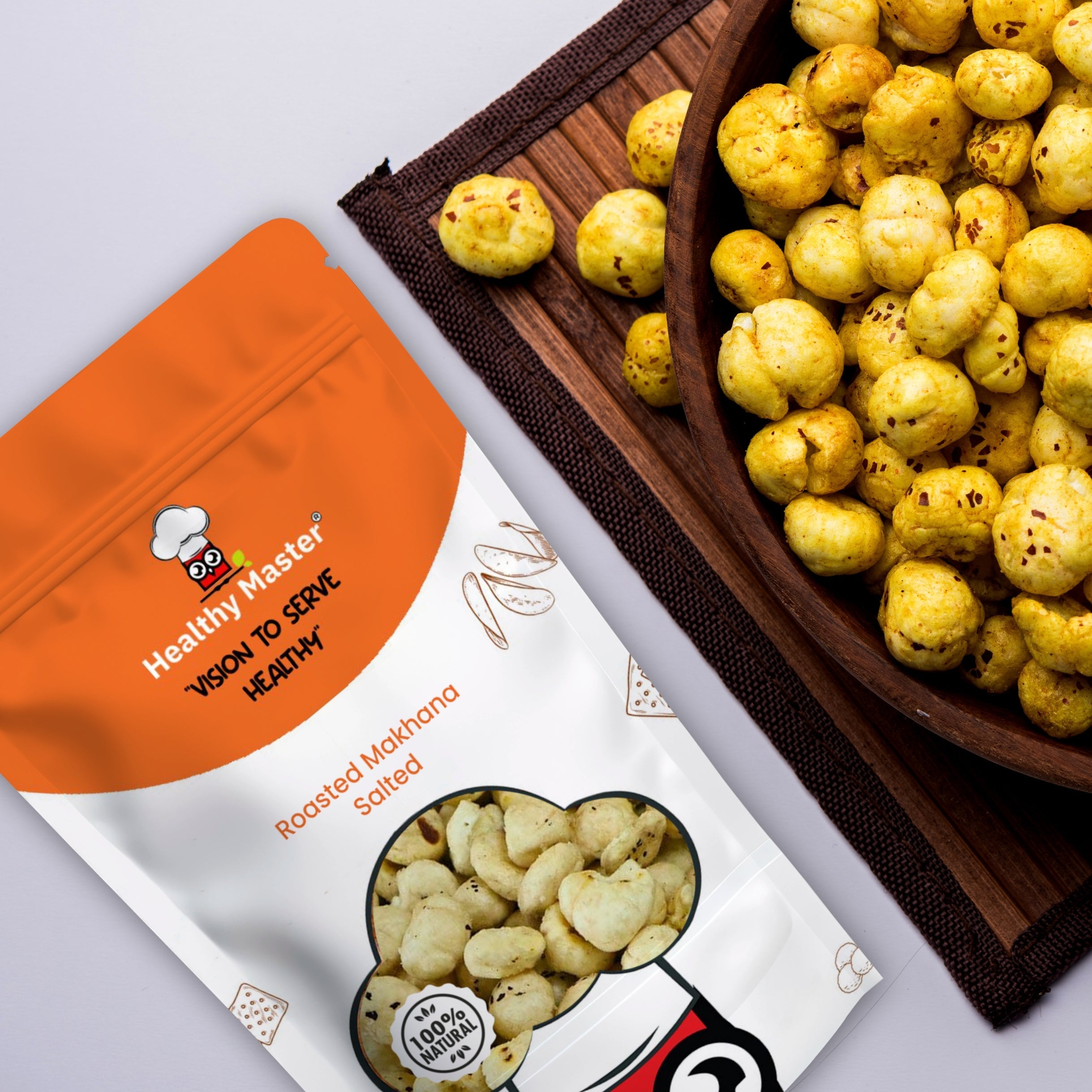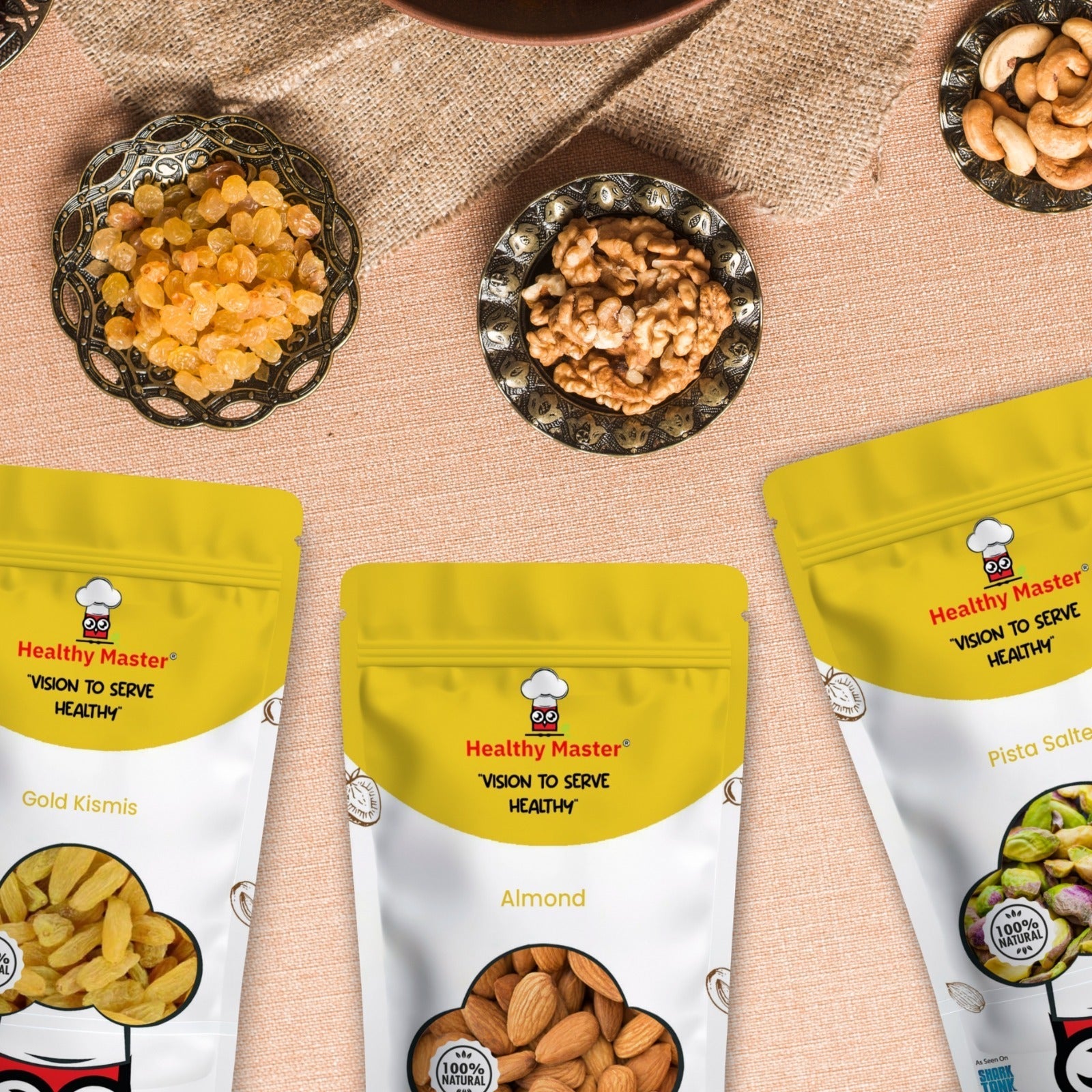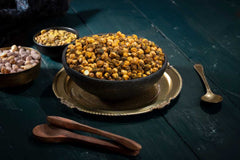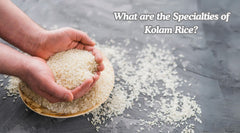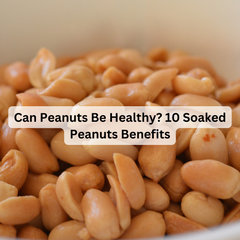You've likely heard it both ways: "Dry fruits are full of nutrients!" and "Fresh fruits are the authentic stuff!" So what's the deal? In this age-old debate of dry fruits and fresh fruits, the answer's not so black and white as choosing a side. It ultimately depends on your intentions, lifestyle, and how you consume them.
As a health brand (and parents ourselves!), we're always weighing convenience against nutrition. Do we add some raisins to our kids' snack box or cut up an apple? If you're curious about topics like the sugar content, calories, or nutrition of dried fruit versus fresh fruit, we've laid it all out here, truthfully, simply, and with your health in mind.
Dry Fruits vs Fresh Fruits: A Quick Comparison
Before we dive deep, here’s a snapshot:
|
Feature |
Fresh Fruits |
Dry Fruits |
|
Water content |
High |
Low |
|
Shelf life |
Short |
Long |
|
Sugar concentration |
Lower (per gram) |
Higher (per gram) |
|
Caloric density |
Lower |
Higher |
|
Fiber & Nutrients |
High (especially water-soluble vitamins) |
Concentrated (but some loss during drying) |
|
Convenience |
Perishable, juicy |
Portable, travel-friendly |
Both options have their strengths. It's not about replacement, it's about the right combination for your body and your lifestyle.
Dry Fruits vs Fresh Fruits – An Overview
What Are Fresh Fruits?
Fresh fruits are naturally occurring, whole fruits, not processed and full of water content. Apples, bananas, berries, grapes, and oranges come to mind – juicy, colorful, full of natural hydration.
What Are Dry Fruits?
Dry fruits are fresh fruits that have gone through the process of natural sun drying or dehydration to eliminate the water content. Everyday examples include raisins (dried grapes), apricots, figs, and prunes.
Key Differences
Texture: Dry fruits are chewy and dense, whereas fresh fruits are juicy and soft.
Taste: Dry fruits have a sweeter taste because of concentrated sugars.
Shelf Life: Dry fruits remain fresh for months; fresh fruits become spoiled in a few days.
Dried Fruit vs Fresh Fruit Nutrition
Nutrient Concentration
When the water in the fresh fruits is removed, the nutrients are more concentrated in dry fruits. It implies that you're receiving more fiber, antioxidants, and calories in a lesser volume.
Antioxidants
Certain dry fruits such as raisins, dates, and prunes contain more antioxidants per gram than their fresh equivalents. Antioxidants contribute towards fighting oxidative stress and inflammation within the body.
Vitamin & Mineral Variations
Vitamin C: This water-soluble vitamin is considerably lost through the application of heat in drying.
Iron & Potassium: Dry fruits such as apricots and dates contain more of these minerals than fresh fruits.
Fiber Content
Both fresh and dried fruits are healthy sources of fiber, but dried fruits tend to contain more fiber per serving because of their density. Fiber promotes digestive health and satisfies hunger longer.
Dried Fruit Compared to Fresh Fruit Sugar Content
Natural Sugar Concentration
Since water content is lost, the natural sugars become very concentrated. For instance, a cup of grapes holds approximately 15g of sugar, whereas a cup of black raisins contains more than 85g.
Blood Sugar Impact
Dried fruits have a higher GI, which means that they will increase blood sugar more rapidly than most fresh fruit. But combining them with nuts or eating them in small amounts can minimize this effect.
Best Low-Sugar Dry Fruits for Diabetics
-
Walnuts
-
Almonds
-
Pistachios
-
Dried mulberries (small amounts)
Importance of Portion Control
Due to high sugar density, dry fruits should be consumed in smaller portions – around 30 grams (a small handful) per day is ideal.
Dried Fruit vs Fresh Fruit Calories
Calorie Density
Water loss during drying increases the calorie density of fruits. You're likely to consume more calories from a handful of raisins than from a whole bunch of grapes.
Calorie Comparison Table (Per 100g):
|
Fruit Type |
Fresh (Calories) |
Dried (Calories) |
|
Grapes/Raisins |
67 |
299 |
|
Apricot |
48 |
241 |
|
Apple |
52 |
243 |
|
Fig |
74 |
249 |
Weight Goals
-
Weight Loss: Fresh fruits are more filling due to water and fiber.
-
Weight Gain: Dry fruits are great for calorie-dense snacking.
Also read about: Benefits of Dry Fruits
Health Benefits of Fresh Fruits
Hydration & Cooling
With up to 90% water content, fresh fruits help keep the body hydrated, especially during hot weather.
Rich in Water-Soluble Nutrients
Fresh fruits are high in Vitamin C, B vitamins, and natural enzymes that often degrade during drying.
Digestion & Skin Health
Their natural fiber and water support smooth digestion, glowing skin, and improved metabolism.
Best Examples:
-
Apples (digestion, satiety)
-
Berries (antioxidants, skin health)
-
Citrus fruits (immunity boost, Vitamin C)
Health Benefits of Dry Fruits
Longer Shelf Life
Dry fruits can last for months, making them great for storage, travel, and emergency snacking.
Quick Energy Source
Ideal for athletes, trekkers, or anyone needing a fast energy boost. The natural sugars provide quick fuel.
Nutrient-Rich Powerhouses
-
Iron: Dates, figs
-
Potassium: Prunes, apricots
-
Healthy fats: Almonds, walnuts, pistachios (often clubbed under “dry fruits” though technically nuts)
Best Examples:
Which Is Better – Dry Fruits or Fresh Fruits?
The answer isn’t one-size-fits-all. It depends on your lifestyle, health goals, and nutritional needs.
Fresh Fruits Are Better If You:
-
Want to lose weight
-
Need hydration
-
Have a sedentary lifestyle
Dry Fruits Are Better If You:
-
Need a quick energy boost
-
Are traveling or unable to store fresh fruits
-
Want long-lasting, healthy snacks
Best approach: Combine both wisely. Eat fresh fruits daily and include a small handful of dry fruits as a snack or meal topper.
Also read about: Why you should include dried fruits in your daily diet plan.
Healthy Ways to Include Dry & Fresh Fruits in Your Diet
-
Smoothies: Blend bananas, berries, and soaked dates for a power smoothie.
-
Salads: Toss apple slices with walnuts and raisins.
-
Snack Mix: Almonds, figs, and dried cranberries in a portioned zip-lock.
-
Breakfast: Top oats or yogurt with fresh fruits and a sprinkle of chopped dates or almonds.
To End
Both fresh fruits and dry fruits have their unique benefits. While fresh fruits offer hydration, fewer calories, and rich water-soluble nutrients, dry fruits provide convenience, energy, and concentrated nutrition.
The healthiest diet is one that finds the right balance between the two. Pay attention to your portion sizes, your daily activity levels, and specific health goals to get the most out of both.
Ready to Snack Smarter with Premium Dried Fruits?
At Healthy Master, we believe that healthy eating should be easy, tasty, and guilt-free. That’s why we offer a wide range of high-quality, preservative-free dried fruits, perfect for snacking, baking, or boosting your daily nutrition. Whether you love almonds, figs, raisins, or exotic blends, our dried fruits are packed with natural goodness and delivered right to your doorstep.
Frequently Asked Questions
1. Is dried fruit healthier than fresh fruit?
Not necessarily. Dried fruit is more nutrient-dense, but it also contains more sugar and calories. Fresh fruit is better for hydration and vitamin C.
2. Which has more sugar – dry fruits or fresh fruits?
Dry fruits have more concentrated sugar due to dehydration. Fresh fruits have less sugar per serving and a lower glycemic impact.
3. Are dry fruits good for weight loss?
Yes, if eaten in moderation. Due to their calorie density, overconsumption can hinder weight loss goals.
4. Can diabetics eat dry fruits?
Yes, but low-sugar options like almonds, walnuts, and pistachios are better. Avoid sweetened or candied varieties.
5. How much dried fruit should I eat daily?
Stick to 30 grams (1 small handful) of unsweetened dried fruits daily to enjoy the benefits without excess sugar or calories.
 Deal of the week : Trial Snack Box - 18 Wholesome Delights Just at ₹ 899.00
Deal of the week : Trial Snack Box - 18 Wholesome Delights Just at ₹ 899.00




